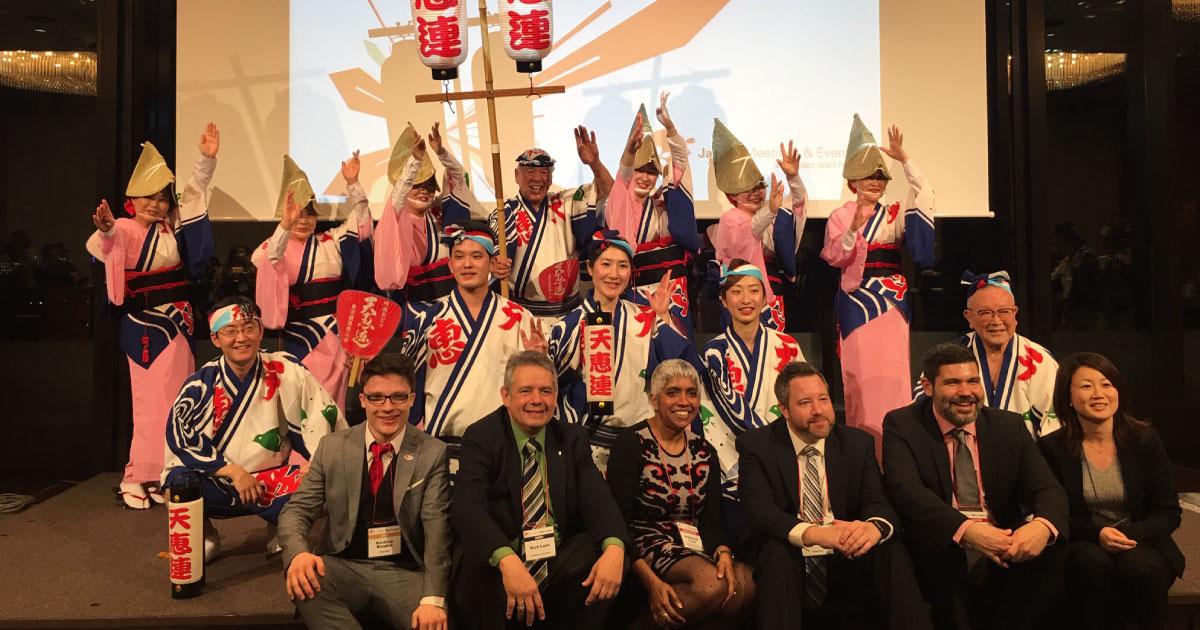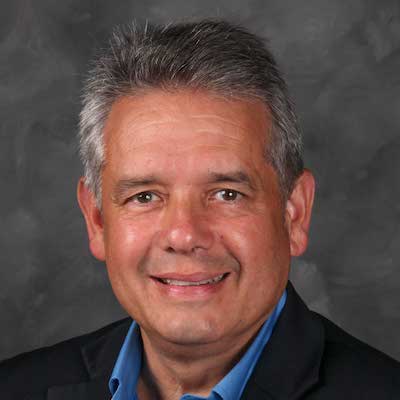Japan is already positioned as Asia’s leading destination for meetings and events, and the country’s tourism board aims to keep it that way.
The Japan National Tourism Organization (JNTO) is highlighting the country’s commitment to supporting the meetings, incentives, conferences and exhibitions business (MICE) with the launch of a new campaign called “New Ideas Start Here.”
The initiative was announced in late 2018 and presented to 14 hosted buyers and meeting industry media during a visit to Japan earlier this year that included tours of Tokyo and eight other cities.
This is our opportunity to promote Japan as a business events destination,” says Etsuko Kawasaki, executive director of the JNTO Japan Convention Bureau. “We want Japan to attract even more meetings and events.”
The “New Ideas Start Here” campaign is designed to capture the essence of why organizations should consider taking business to Japan, emphasizing how coming into contact with the local people and culture can trigger imaginative and innovative ideas. Participants of business events in Japan can gain inspiration and flashes of insight, which may enable their business growth, JNTO says.
The country is coming off a record year for visitors, with more than 31 million overseas visitors traveling to Japan in 2018, a nearly 9 percent increase over the previous year. The number of visitors has been steadily increasing since 2012.
Kawasaki says the goal is to reach 60 million visitors by 2030, which would translate to more than $136 billion in spending.
With a slew of major international events going to Japan over the next two years, it would seem that JNTO’s goals are quite achievable.
The country is hosting such major sporting events as the Rugby World Cup this year at 12 different venues and the Tokyo Olympics and Paralympic Games in 2020.
Later this year, the G20 Summit will be in Japan for the first time, with meetings taking place in nine venues nationwide.
But Kawasaki also acknowledges the scope of meetings that are planned for Japan, just in 2019 alone. More than 5,000 attendees are expected for the World Congress of the International Society for Prosthetics and Orthotics in Kobe; about 4,000 attendees are expected for the 5th World Parkinson Congress in Kyoto; and the International Society of Physical and Rehabilitation Medicine World Congress will attract about 3,000 attendees to Kobe.
Equally impressive is the number of smaller meetings scheduled in venues such as Matsue, Kanazawa and Fukuoka.
“Our strategy includes promoting how there are destinations for all groups in all of Japan,” Kawasaki says.
According to meetings statistics tracked by the International Congress and Convention Association (ICCA), Japan ranked No. 7 in the world with more than 400 congresses in 2017, best in Asia. Tokyo was in the top 20 in city rankings in the world while Tokyo, Kyoto, Nagoya and Sapporo were in the top 25 for destinations in Asia.
Part of the new strategy from JNTO includes exposure for other unique destinations in Japan. The meeting planners who were part of the recent tour, for example, split up into smaller groups and visited the cities of Yokohama, Matsue, Sendai, Tsukuba, Kanazawa, Toyama, Takamatsu and Okayama.
Kim Bentley, who is based in Trussville, Ala., and is a meeting planner for Radiology International Inc., visited the cities of Yokohama and Matsue.
“For myself and my group, Yokohama is the perfect location,” she says. “The city is big enough to hold larger conventions and meetings without feeling lost inside a big city.
“I like that that Yokohama provided a sense of ‘Japan,’ but on a smaller scale than if you took a group to Tokyo. It provided a lot of different dimensions that I look for when looking at a city as a possible site. Yokohama was very walkable.”
She was also impressed with many aspects of Matsue, saying the city “provided a small, hometown feeling. It was an absolutely beautiful place. It had a very nice convention hall that would be suitable for meetings.”
In addition to exposure to different cities and venues, the JNTO strategy will highlight Japan’s culture, technology and opportunities to tap into the country’s leaders from academia, industry and business.
Japan is also taking steps to bolster its infrastructure. Nearly 20 new hotels in 12 cities are scheduled to open by 2020, while new conference centers are being built in Kumamoto, Tokoname, Yamagata, Yokohama, Nara, Himeji, Takasaki and Kagoshima. The largest convention centers planned include the more than 6.5 milllion-square-foot Aichi International Exhition Center in Tokoname and a 540,000-square-foot Himeji Casty21 structure.
The country’s cultural history is also an attractive appeal for meeting planners and attendees. With unique venues such as the Okayama Castle, the Osaka City Central Public Hall, the Miyazaki Jingu Shrine and the Okinawa Karate Kaikan, Japan has much to offer.
“We believe that international conferences are a key factor in driving industry growth,” Satoshi Seino, president of JNTO, told the hosted buyers in his welcome. “The face-to-face exchange of knowledge and ideas contributes to a global development in all academic fields.”



